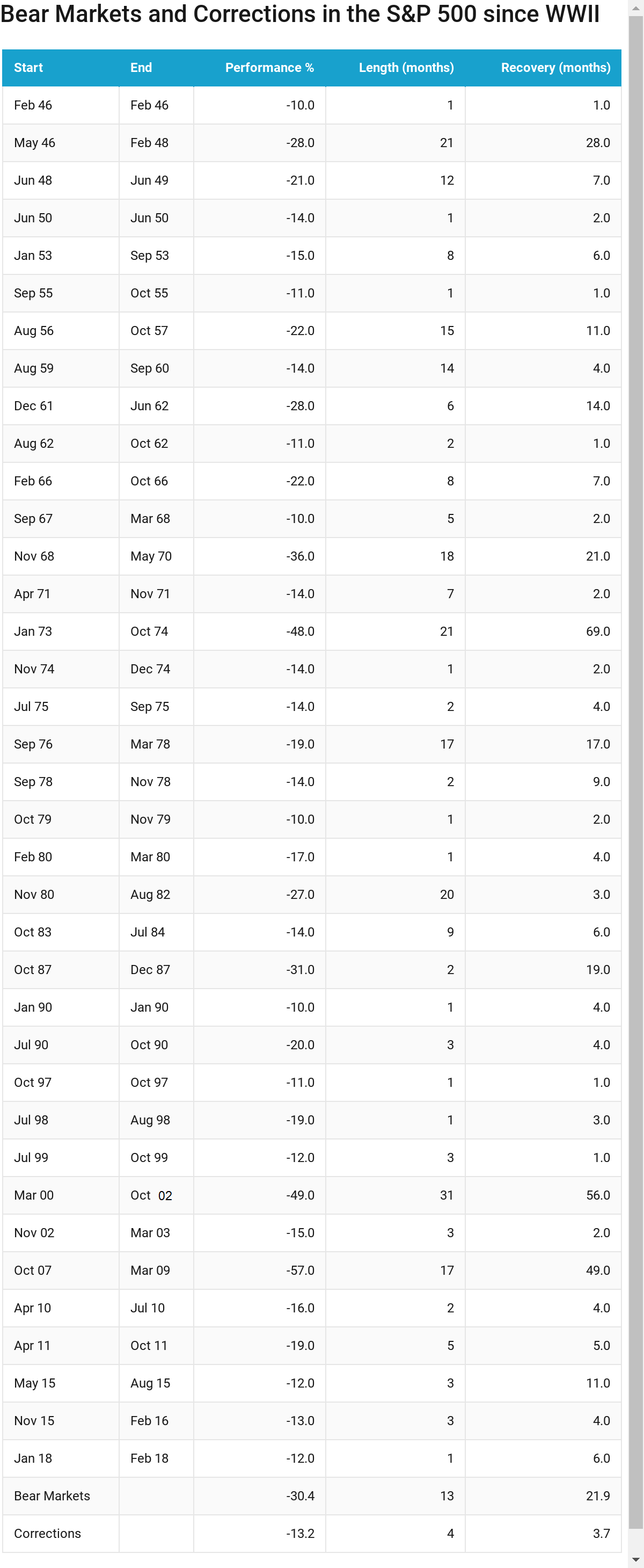It’s helpful to know what a “bear market” is because based on history, it looks like we could be here for a while.
The term on Wall Street is synonymous with serious, long-lasting declines in stock markets. In numeric terms, a bear market is a 20 percent or more drop from a recent peak.
The S&P 500 hit that milestone on Monday, dropping 20 percent from its 52-week high. Markets have stumbled through what is usually one of their best months of the year, with indexes on track for their worst December performances since the Great Depression in 1931.
Aside from a percentage drop, there other, more emotional ways to measure a bear market.
Pessimism tends to prevail. When good news isn’t enough to hold off sellers and despite solid economic conditions, markets continue to tank — that’s a bear market. The glass-half-full scenario is often overlooked and any positive news seems to be forgotten by the close of trading.
In December, oversold markets have struggled to make a comeback, suggesting that investors are worried about something bigger. Still, economic fundamentals are not giving red flags of a recession, which is usually a necessary condition for a full-fledged bear market.
If this bear market is anything like the last time, it could take some time to recover.
Since World War II, bear markets on average have fallen 30.4 percent and have lasted 13 months, according to analysis at Goldman Sachs and CNBC. When that milestone has been hit, it took stocks an average of 21.9 months to recover.
Even when stocks enter “correction” territory, which is defined by at least a 10 percent drop from a recent high, there’s a long road to recovery. History shows corrections last four months and equities slide 13 percent before finding a bottom.
Traders have a laundry list of things to watch heading into next year. The Federal Reserve is raising interest rates, making it more expensive to borrow money. Last week, the central bank hiked its benchmark interest for a fourth time this year while Fed Chairman Jerome Powell signaled it would continue to unwind its balance sheet at the current pace.
Investors are also focused on tense trade talks with China, a government shutdown that could last through the end of this week and oil prices.

— CNBC’s Michael Santoli contributed to this report.
WATCH: How the Fed could cause the next recession, according to Gary Shilling
